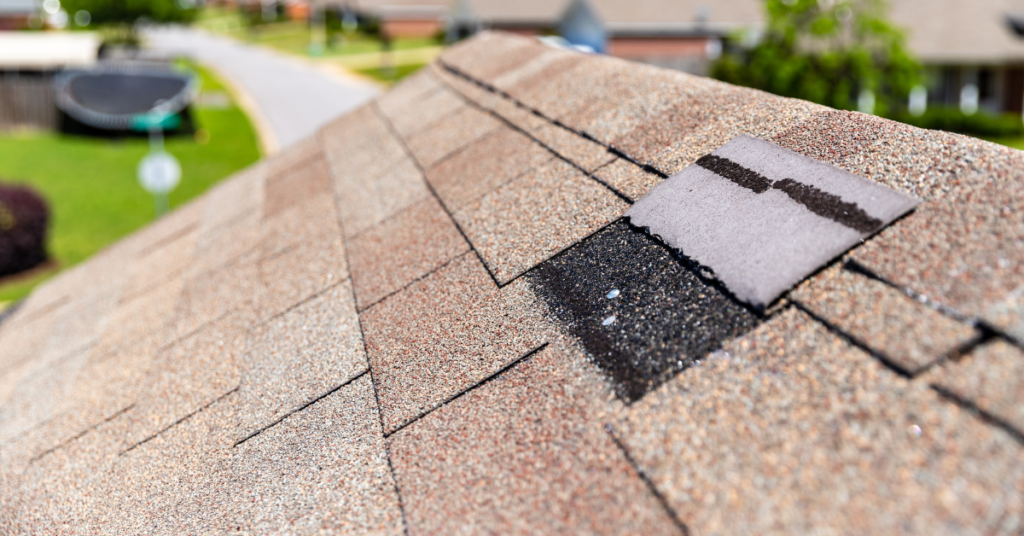How to Spot Early Signs of Roof Damage After a Dry Summer in the Willamette Valley

At Stutzman & Kropf, we’ve seen how the unique weather in the Willamette Valley affects homes—especially after a hot, dry summer, which often leads to roof damage. With rising temperatures and weeks without rain, your roof can quietly sustain damage that isn’t immediately obvious. As fall approaches, now is the perfect time to inspect your roof for early signs of trouble and prevent minor issues from turning into costly repairs.
Whether you’re a homeowner or manage a commercial property, here are a few key things to watch for after a dry summer.
How Dry Summers Impact Your Roof
The Willamette Valley’s dry summer heat can put your roof to the test. Prolonged sun exposure weakens roofing materials, making them more prone to cracking, curling, and shrinking. We’ve worked with many local homeowners and businesses, addressing these very issues when summer ends and rainy weather returns.
During the summer, shingles can lose moisture, causing them to become brittle and less flexible. This is particularly true for asphalt shingles, which are popular in our area. Without proper flexibility, these shingles start to crack, curl, or even detach. Additionally, the caulking and sealants that protect your roof’s vulnerable areas—like around chimneys, vents, or flashing—can dry out and lose their effectiveness. Once these areas start to break down, water can easily find its way into your home during the first big rain of the fall season.
So, what are the warning signs that your roof may have suffered damage over the summer? Let’s dive into a few things to keep an eye on.
What to Look For: Early Signs of Roof Damage
1. Cracked or Curling Shingles
One of the most common issues we see after a hot summer is cracked or curling shingles. When shingles dry out and lose their flexibility, they can warp, split, or curl upwards. This not only affects your roof’s appearance but also leaves your home vulnerable to water damage. If you notice shingles lifting or looking brittle, it’s time to give us a call.
2. Loose Flashing or Gaps
Flashing is critical for keeping water out of the joints and edges of your roof, especially around chimneys, skylights, and vents. After a summer of intense heat, flashing can warp, loosen, or even develop gaps. These are areas where water can seep through, causing rot or structural damage over time. If you notice any loose materials or signs of wear around these areas, it’s a good idea to have us check it out.
3. Brittle or Deteriorating Roof Materials
If your roof is made of materials like shingles, tiles, or even a rubber membrane, prolonged heat exposure can cause them to become brittle and lose their protective qualities. When materials break down, they can crack or crumble, increasing the risk of leaks. While this damage might be difficult to spot from the ground, you can often see pieces of shingles or other debris in your gutters or around your home.
4. Roof Sagging or Shifting
Although sagging may seem like an issue related to water damage, it can also result from structural shifts caused by extreme dryness. Over time, a roof that has been exposed to dry heat can lose some of its integrity. If you notice any unevenness or sagging areas on your roof, it’s worth calling Stutzman & Kropf for an inspection to catch any potential problems before the rains arrive.
5. Clogged or Damaged Gutters
Gutters are often overlooked, but they’re an essential part of your roofing system. Dry summers can lead to debris buildup or even heat stress in the gutter materials. If your gutters are pulling away from the house or show signs of wear, they may not handle heavy rain as effectively, leading to water damage to your siding or foundation. We recommend checking your gutters or having us inspect and clean them before the fall rains begin.
How to Inspect Your Roof for Damage
As experienced roofers in the Willamette Valley, we always advise homeowners to perform a simple roof inspection after a dry summer. While we don’t recommend climbing onto your roof yourself, there are a few things you can look for safely from the ground or by using binoculars.
- Start by looking for obvious signs of wear, such as missing, cracked, or curled shingles.
- Check the flashing around chimneys, skylights, and vents for any gaps or peeling materials.
- Inspect your gutters for sagging, cracks, or separation from the roofline.
- Look for any debris on the roof or in your gutters, such as pieces of shingles or roofing materials.
If you’re not sure what you’re seeing or have concerns, it’s always better to be safe than sorry. At Stutzman & Kropf, we can perform a thorough inspection and catch issues that may not be visible to the untrained eye. Early detection can save you from larger, more expensive repairs down the road.
Why Early Detection Matters
Roof damage that starts small can escalate quickly, especially in the Willamette Valley’s rainy season. A cracked shingle or gap in the flashing might seem minor in the dry summer, but once the rain starts to pour, these issues can lead to leaks, mold, and even structural damage. The earlier you detect and address these problems, the easier and more affordable they are to fix.
We’ve seen homeowners wait too long to address roof issues, only to face expensive repairs that could have been avoided. That’s why we always recommend scheduling an inspection before the fall. It’s a small investment that can protect your home or business from significant damage down the road.
Schedule Your Roof Check Before the Rain Hits
If you’ve noticed any signs of roof damage after this dry summer—or if you just want the peace of mind that your roof is ready for the rainy season—contact Stutzman & Kropf. We’re experts in roof inspections and repairs here in the Willamette Valley, and we’re ready to help you keep your home or commercial property safe and secure. Don’t wait until the rain starts pouring; let us check your roof today.
#
This article was originally published on StutzmanandKropf.com. For all of your Oregon roofing needs, give us a call today.
